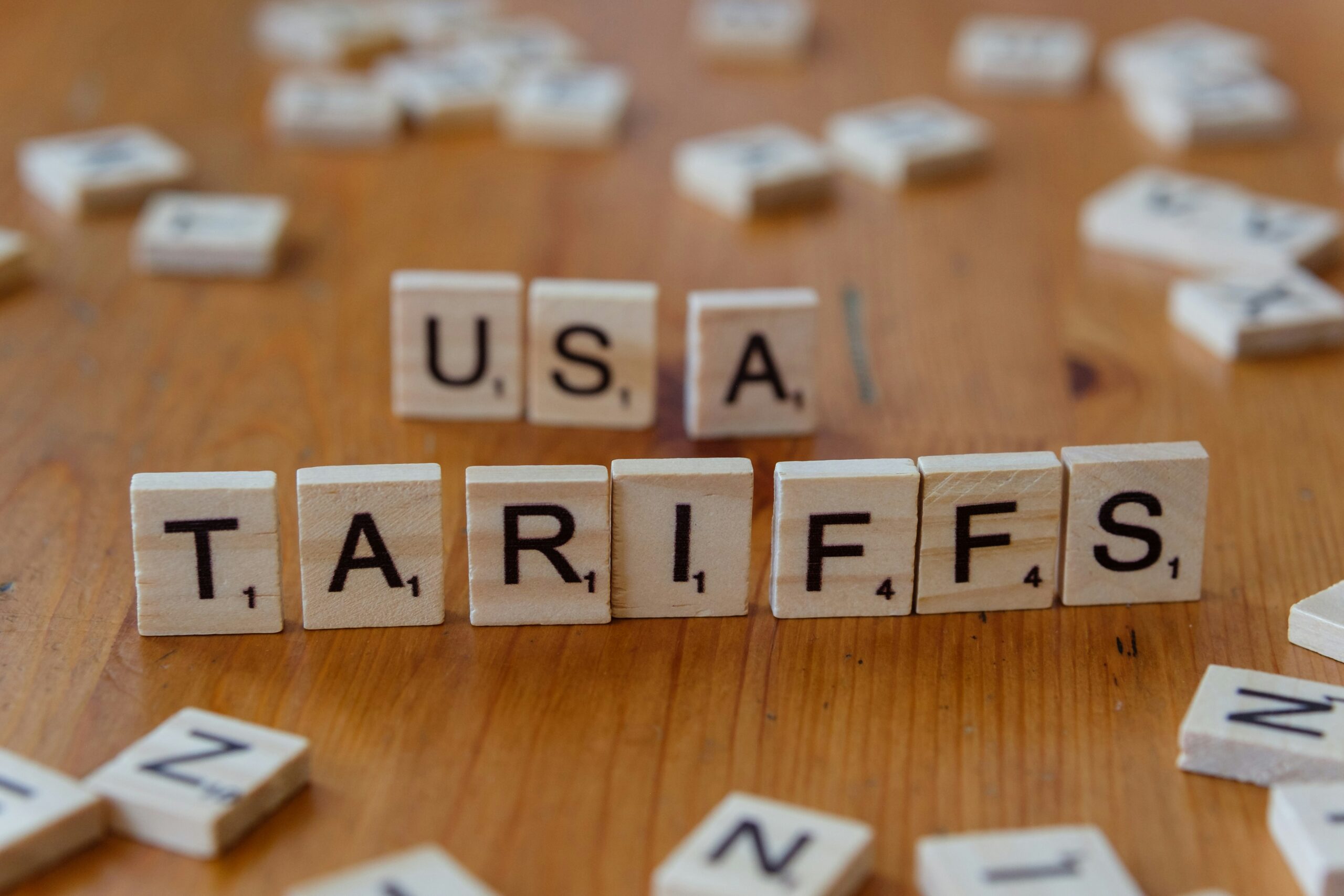
Introduction to Tariffs
Tariffs are taxes imposed by governments on goods and services imported or exported across international borders. They serve various purposes, primarily aimed at protecting domestic industries, regulating international trade, and generating government revenue. In essence, tariffs make imported goods more expensive, which can encourage consumers to purchase domestically produced items instead. As a result, tariffs play a crucial role in shaping economic relations between countries and influencing global trade dynamics.
There are generally two types of tariffs: import tariffs and export tariffs. Import tariffs are levied on goods brought into a country, while export tariffs are applied to products leaving a country. Import tariffs are more commonly utilized, as countries seek to shield local businesses from foreign competition. By increasing the prices of imported goods, governments aim to nurture their domestic industries and promote local employment. Conversely, export tariffs are less frequent and are usually implemented to control the availability of certain commodities in the global market.
The implications of tariffs extend beyond domestic economies. They can significantly impact international relations, often leading to trade disputes or retaliatory measures between countries. For instance, if one country raises tariffs on another nation’s exports, the affected country might impose its own tariffs in response. This can result in a cycle of trade tensions that can hinder diplomatic relations and disrupt global markets. Understanding the role of tariffs is essential, especially in light of Donald Trump’s upcoming tariff update and the anticipated changes in trade policies that could influence both domestic and international economic landscapes.
The Impact of Tariffs on the Economy
Tariffs, which are taxes imposed on imported goods, carry significant implications for local economies, various industries, and consumers at large. The primary aim of implementing tariffs is often to protect domestic businesses from foreign competition by making imported goods more expensive. This protective measure can bolster local industries, potentially increasing job security and fostering economic growth in specific sectors. For instance, by taxing steel imports, the government may support local steel manufacturers, leading to job preservation and possibly the expansion of domestic production facilities.
However, the impact of tariffs is not universally positive and can result in increased prices for consumers. When tariffs are imposed, businesses often pass on the additional costs to consumers, leading to higher prices for a variety of goods. This price inflation can have widespread ramifications, particularly in industries that rely on imported materials, such as the automotive and electronic sectors. For example, tariffs on aluminum and steel have been known to raise vehicle production costs, resulting in higher retail prices for consumers.
Moreover, tariffs can provoke retaliation from trading partners, escalating into trade wars that further complicate economic relationships. When a country raises tariffs, affected trading partners may respond with their own tariffs on exports, which can hurt local exporters and lead to a downturn in international trade. An illustrative case is the U.S.-China trade war, in which significant tariffs led to increased costs for manufacturers and disruptions in supply chains, ultimately affecting businesses and consumers worldwide.
In summary, the implementation of tariffs presents a dual-edged sword for the economy. While tariffs can offer protection for local businesses, they frequently result in higher consumer prices and retaliation from other countries, challenging the economic landscape and necessitating careful policy consideration. Understanding both the positive and negative impacts is crucial for navigating this complex issue.
Historical Context of Trump’s Tariff Policies
Since taking office in January 2017, President Donald Trump has implemented a series of tariff policies that have significantly altered the landscape of international trade. His administration’s approach was characterized by the belief that previous trade agreements favored other nations at the expense of the United States. This perspective prompted the imposition of tariffs as a strategic measure to protect American industries and jobs. The initial focus was on steel and aluminum, with tariffs of 25% and 10%, respectively, announced in March 2018. The rationale behind these tariffs was rooted in national security concerns, suggesting that dependence on foreign metals posed a significant risk.
These tariffs quickly instigated tensions with several countries, notably China and Canada. In response to the US tariffs, China retaliated with its own tariffs on American goods, targeting industries such as agriculture, which had devastating effects on American farmers. The tit-for-tat tariff exchanges highlight how Trump’s policies not only affected economic transactions but also strained diplomatic relations. In an effort to renegotiate favorable terms, the administration pursued extensive negotiations, most notably resulting in the United States-Mexico-Canada Agreement (USMCA) which replaced the North American Free Trade Agreement (NAFTA).
Moreover, Trump’s tariffs extended beyond steel and aluminum; they included significant duties on a wide range of products from China, with the objective of compelling Beijing to address intellectual property theft and trade imbalances. These actions positioned the United States in a contentious trade war, which saw both sides navigating increasingly complex economic landscapes. The ongoing ramifications of these tariffs continue to shape discussions about the future of international trade relations, emphasizing how historical decisions can create lasting impacts on global economic dynamics.
What to Expect from the Upcoming Announcement
As Donald Trump prepares to issue a major tariff update, various rumors and speculations have surfaced regarding the changes that may be announced. Analysts are closely monitoring the situation, anticipating potential implications for both the domestic and global economy. The rumored focus of the tariff update may include adjustments to existing tariffs on imported goods, as well as the introduction of new tariffs aimed at specific sectors. This has raised concerns among businesses that rely on international supply chains and consumers who could see higher prices as a result.
Industry experts suggest that the administration may target specific countries or industries, which could lead to heightened trade tensions. Existing tariffs on steel and aluminum imports are one particular area anticipated for review. A potential increase in these tariffs might be a strategic move to bolster domestic production. Conversely, there are also discussions about easing some tariffs, which could provide relief to American consumers and businesses struggling with inflated costs.
In addition to these anticipated tariff adjustments, the announcement may also coincide with broader trade policy shifts that reflect the administration’s current approach to international relations. Economic analysts believe that Trump’s approach will focus on reinforcing America’s position in global trade while also considering the economic impacts on American workers. The outcomes of these decisions will be closely scrutinized, as they hold significant implications for trade relations and the overall economic landscape.
As the updated tariffs are likely to influence various industries differently, stakeholders across the board are preparing for the upcoming announcement. It remains essential for businesses to stay informed about these changes to mitigate risks and adapt their strategies accordingly. In conclusion, the upcoming tariff update may lead to substantial changes in trade dynamics, the effects of which will be felt across the economy.
Reactions from Industry Leaders and Economists
The anticipated tariff update from Donald Trump has elicited a diverse range of reactions from industry leaders and economists. Supporters of the tariff adjustments argue that increased tariffs on imports could significantly bolster domestic manufacturing. They assert that by raising the cost of foreign goods, American consumers would be encouraged to purchase locally produced items. This shift, they argue, could lead to job creation and foster a more robust manufacturing sector, positioning the United States as more self-reliant economically.
Among proponents, there is an emphasis on the potential benefits for specific industries, such as steel and aluminum manufacturing, which have been under pressure from cheaper imports. Industry leaders voice optimism that higher tariffs may mitigate the competition from abroad, allowing U.S. companies to thrive and regain market share. As one manufacturing executive noted, “These tariffs are essential for leveling the playing field and supporting local jobs that have been lost overseas.”
Conversely, critics of the proposed tariff update express significant concerns regarding the broader implications for the economy. Economists warn of the risks of initiating trade wars, suggesting that such actions could provoke retaliatory measures from other countries, ultimately leading to increased costs for consumers and manufacturers alike. Concerns also arise regarding the potential disruption to supply chains, as businesses often rely on imported materials for production. A prominent economist remarked, “While protecting domestic industries is vital, we must consider the long-term consequences of a protectionist approach on global trade relationships.”
Furthermore, the uncertainty surrounding the upcoming tariff changes adds to the anxieties faced by various sectors. Businesses may hesitate to make investment decisions until the implications of the tariffs are fully understood. The divergent views among industry leaders and economists underscore the complex nature of the issue, illustrating the need for ongoing dialogue as stakeholders navigate the potential challenges and opportunities presented by the tariff update.
Potential Global Repercussions
The impending tariff update proposed by Donald Trump poses significant concerns for global trade dynamics. Such changes in tariff policy can disrupt established trade relationships and lead to a cascade of economic repercussions that extend beyond the borders of the United States. As countries assess the implications of these tariffs, it is crucial to consider how they might respond to mitigate negative impacts on their local economies.
One possible outcome is that affected nations may implement retaliatory tariffs. Historically, when the United States has imposed tariffs, foreign governments have sought to protect their interests by levying similar taxes on American goods. This cycle of escalation not only disrupts trade flows but also creates an environment of uncertainty, disincentivizing companies from engaging in international trade. The prospect of retaliatory measures could further strain economic relationships, particularly among major trading partners.
Furthermore, these tariff changes could lead to a reevaluation of international supply chains. Companies might seek to relocate production to countries with more favorable tariff policies, thereby reshaping global manufacturing landscapes. Such shifts could benefit some nations while disadvantaging others, particularly smaller economies that may lack the leverage to negotiate favorable terms. In addition, these alterations may result in increased prices for consumers, as tariffs often lead to higher costs being passed down through the supply chain.
The implications of a major tariff update extend beyond immediate economic effects, potentially influencing geopolitical relationships as well. Nations that rely heavily on trade may find themselves rethinking alliances in favor of more favorable economic partnerships. As countries react to the proposed tariff changes, monitoring these global dynamics will be essential in understanding the broader impacts on international trade and economic relations.
How Consumers Might be Affected
The impending updates to tariffs introduced by Donald Trump are set to bring considerable changes to the economic landscape, potentially impacting everyday consumers significantly. These tariff changes, designed to affect imported goods, could lead to noticeable fluctuations in product pricing. As manufacturers face increased costs due to higher import duties, these expenses are often passed on to consumers in the form of higher retail prices, which could skew affordability for a wide range of products.
Particularly vulnerable sectors include electronics, clothing, and household goods, as many of these items are heavily reliant on imports. Consumers may soon find that their purchasing power is diminished due to elevated prices, resulting in an altered shopping behavior where they may opt for cheaper alternatives or seek out domestic products to avoid these increases. This change in consumer behavior can not only affect individual wallets but could also lead to broader consequences for businesses reliant on consumer spending.
Moreover, availability of certain products could become a critical concern, as tariffs may create supply chain disruptions. Such disruptions could lead to shortages of specific items on store shelves, further complicating the purchasing decisions faced by consumers. In response to these changes, consumers might begin to prioritize spending on essential goods over discretionary purchases, potentially impacting sales for various industries.
Ultimately, as the updated tariffs take effect, the reaction of consumers will likely hinge upon their adaptability to these economic shifts. By understanding the consequences of upcoming tariff changes, consumers can gear themselves for potential price increases and product shortages, fostering a more strategic approach to budgeting and spending in the face of evolving market conditions.
Strategies for Businesses in Response to Tariff Changes
As companies navigate the complexities of an evolving tariff landscape, it is imperative to adopt proactive strategies that can mitigate the adverse effects of increased tariffs. One of the primary steps businesses should consider involves reassessing their supply chains. Firms may need to investigate alternative suppliers or relocate production to regions with lower tariffs, thus reducing overall costs. Diversifying the supplier base can offer greater flexibility and risk mitigation against sudden changes in tariffs.
Additionally, businesses should evaluate their pricing strategies in response to tariff adjustments. Given that increased tariffs may lead to higher costs for imported goods, organizations must determine whether to absorb these costs or pass them onto consumers. Conducting market research can provide valuable insights into customer price sensitivity, thereby aiding companies in making informed pricing decisions. Transparent communication with customers about the reasons behind any price changes can also foster trust and understanding.
Another crucial aspect to consider is risk management. Companies can benefit from a thorough risk assessment that identifies potential vulnerabilities associated with tariff changes. Engaging in scenario planning can help businesses prepare for various outcomes, whether anticipating increased costs or shifts in demand. Establishing contingency plans ensures that organizations can swiftly respond to any unforeseen challenges that arise due to tariff adjustments.
Moreover, collaboration with industry groups and associations can provide businesses with timely insights about policy changes and common challenges faced by peers. By sharing information and strategies, companies can create a support network that strengthens their position against tariff-related risks. Engaging in advocacy efforts to express the collective concerns of businesses regarding tariffs can also influence policy discussions.
In conclusion, adopting strategic adjustments to supply chains, pricing, and risk management frameworks will enable businesses to navigate the potential impacts of increased tariffs effectively. Through careful planning and collaboration, organizations can safeguard their interests and ensure continued operations despite the uncertainties presented by tariff changes.
Conclusion: The Future of Tariffs Under Trump
As we have explored throughout this blog post, the tariff strategies proposed and implemented by former President Donald Trump marked a significant shift in how the United States approached international trade. From imposing tariffs on steel and aluminum to engaging in trade wars with multiple countries, the Trump administration prioritized protecting American industries and jobs. These measures were intended to address long-standing trade imbalances and increase domestic production. However, they also sparked substantial discussions regarding potential unintended consequences, including adverse effects on manufacturers and consumers due to increased costs.
Looking ahead, it is crucial to consider how tariffs will continue to evolve under Trump’s influence. As he retains a significant voice in American political discourse, particularly regarding trade policy, stakeholders should remain vigilant. Developing a keen understanding of the shifting international trade landscape is essential, as tariffs can dramatically impact global supply chains and international relations. Furthermore, ongoing negotiations with key trade partners will likely shape the trajectory of future tariff policies.
In this context, businesses and consumers alike must stay informed about any announcements from Trump or changes within the administration that may result in new tariff implementations or modifications to existing policies. Ultimately, as the global economy grows increasingly interconnected, it is evident that tariffs will continue to play a pivotal role in shaping trade relations. Therefore, actively monitoring these developments will be critical for understanding broader economic trends and making informed decisions. With this awareness, stakeholders can anticipate the challenges and opportunities that tariff changes may present in the dynamic world of international trade.

